
views
X
Research source
You can best help someone who self-injures by understanding their situation and supporting their recovery journey.
Recognizing Self-Injuring

Trust your instincts. If you begin to have suspicions that someone you know is causing harm to themselves, don’t ignore those suspicions. Rely on your history with the individual and your own ability to read people to determine whether something is going on. Think about whether your friend may be trying to: Manage or reduce severe anxiety and distress and provide an immediate sense of relief Provide a distraction from painful emotions through feeling physical pain Have a sense of control over their body, feelings, or life, particularly if they are a perfectionist Feel anything at all. Sometimes, self-injurers feel so emotionally empty and numb that seeing their own blood helps them feel alive. Express unbearable feelings in an external way and communicate distress and emotional pain to the outside world Punish themselves for their perceived faults Have physical signs and scars to show for their emotional pain
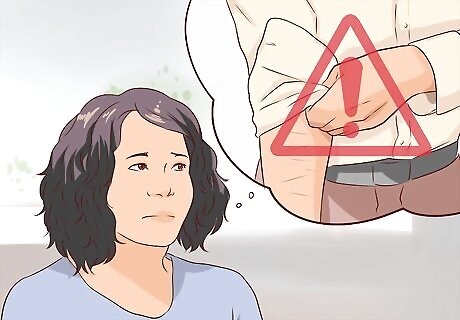
Watch for signs of self-injury. Self-injuring is usually done to the arms, legs, or torso, as these are the most easily hidden areas. If you are watchful, however, you may be able to catch a glimpse of injured areas. You should be respectful, however, and not spy on someone to try to see parts of their body that he keeps hidden; it would be better to just come out and ask them if they are self-injuring. Some signs that a friend or loved one is self-injuring may include: Unexplained injuries or scars Covering up constantly, even when the weather or situation calls for other clothing choices Claims of frequent accidents (to explain injuries or scars) Blood stains appearing on clothing, tissues, or other places Mood or behavior changes such as isolating or seeming irritable or depressed Long periods of silence
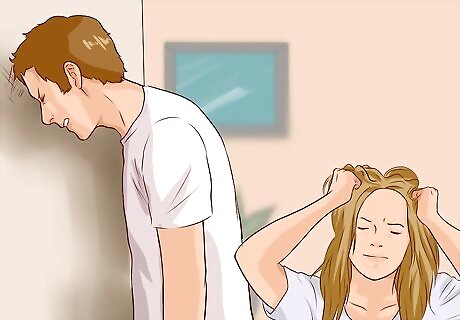
Consider the various methods of self-injury. While the specific means of self-injury can vary, self-injurers often use one or more of the following methods: Cutting or making scratches on the skin Burning the skin (with lit matches, cigarettes, or hot objects) Carving words or symbols into the skin Piercing the skin with sharp objects Breaking bones, hitting or punching themselves, or head banging Biting themselves Pulling out their own hair Picking at scabs or interfering with wound healing Drinking something poisonous, such as bleach or detergent

Try to understand self-injury. Learning about self-injury can help you understand why it occurs, how to relate to the self-injurer, and how to compassionately support them in getting help to stop this behaviour. Self-injury is related to psychological pain and distress, difficulty expressing emotions, and harbouring negative feelings towards oneself, such as guilt, rejection, sadness, self-hatred, worthlessness, loneliness, panic, anger, or sexual confusion. Do not equate self-injury to suicide attempts. Most self-injurers do not wish to kill themselves. Self-injury brings the person a momentary feeling of peace and calm and a release of tension. These immediate feelings of relief are usually followed by guilt, shame, and more painful emotions. Self-injury is a short-term solution that can lead to a long-term problem. Self-harm may be tied to psychological illnesses such as depression, anxiety, obsessive-compulsive disorder, eating disorders, post-traumatic stress disorder, and borderline personality disorder. Self-injury often starts in the teenage years, when emotions are more volatile and can be tied to other impulse control issues, such as alcohol or drug abuse.
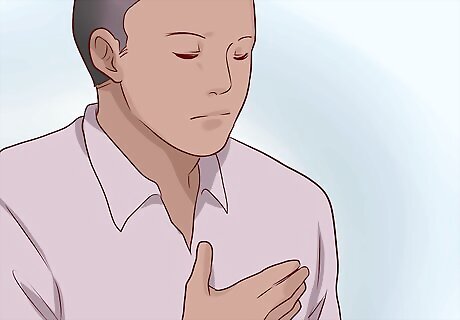
Deal with your own feelings first. Before you try to confront someone about self-harming, you should try to neutralize and deal with your own feelings about the practice of self-injury. If you do not have personal experience with it, it might disgust or shock you, but you should try not to communicate those feelings to the person who self-injures.
Communicating About Self-Injuring

Prepare to talk to the self-injurer. You should have a neutral environment without distractions. Turn off any electronic devices, silence your cell phone or turn it off completely, get a babysitter if you have children, and try to make the environment as comfortable and friendly as possible. You may want to provide tissues if you think that you or your friend may cry during the conversation.
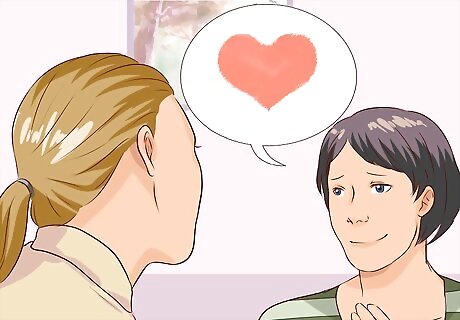
Tell the self-injurer that you care about them. Remind them that they are not alone and you are there to help and support them. Take a little time to review your relationship with the person and tell them how much and why you care about them. This will help show that you are approaching them from a place of love. For example, you might say, “John, we have been friends for 3 years now, and when we met, I was struck by your easygoing personality and your ready laugh. Lately, you haven’t been quite the same, and I am really worried about you. I’ll be your friend no matter what—laughing, crying, happy, sad- whatever. But I want you to know that I am here for you and that I care about you.” Another example is, “Jane, you are my sister. We have been through so much together in our lives, and even when we disagree or don’t get along, I still love you unconditionally. We have a long history and a lasting bond that can help us get through anything. Lately, I’ve been worried about you.”
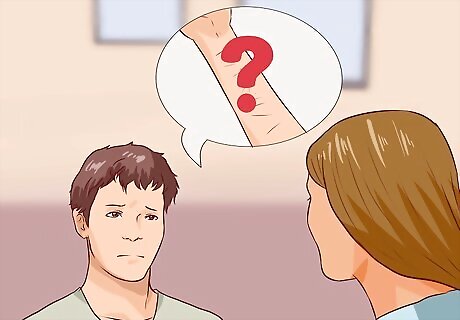
Ask your friend if they are injuring themselves. Many people fear confronting someone who is having emotional problems or self-injuring, often fearing that such a confrontation could lead to the problem worsening or escalating to a suicide attempt. However, this is unlikely to be the case. This is not an easy conversation to have, but it is an important one. Talk frankly yet gently to the person about their self-harm. Your friend may be relieved to share their secrets. You do not have to try to sugar-coat your approach; just be clear and direct. You may say something like, “I have noticed some unusual scars on your body. Those, combined with the fact that you have seemed sad lately, have led me to worry that you are hurting yourself. Are you self-injuring?”

Listen with an open mind. It can be very difficult to hear someone you love talking about hurting themselves, but if you can get them to open up to you, you’re more likely to be able to steer them towards getting help. Let them lead the conversation as much as possible; ask open questions, and let them say what he wants to say. Try to get the person to focus on the feelings rather than the cutting itself.
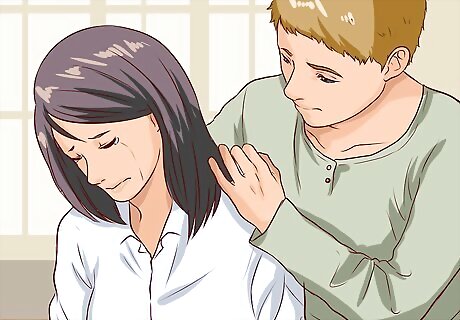
Show empathy in your conversation. Remember that you are talking to the person to provide him with help and with an outlet for expressing his feelings. Do not judge, shame, criticize, or get angry. Yelling at them for their behaviour, threatening to not be friends, or making accusations about their behaviour may increase his risk of self-injuring behaviours. Tell the person that you want to understand what they are going through. Even if you can’t fully understand it, showing that you wish to empathize can communicate how much you care.
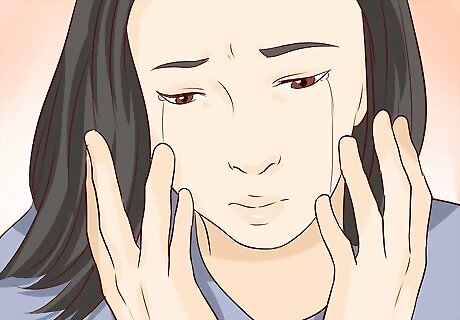
Identify why the person self-harms. There are different reasons for causing self-harm, and the solutions for alleviating or offering alternatives for self-injury vary based on the reason for the self-harm. The most common broad reasons that individuals self-harm are: to express pain or other intense feelings to soothe themselves or feel better to make themselves feel less numb or disconnected to release anger or tension from their body
Offering Alternatives
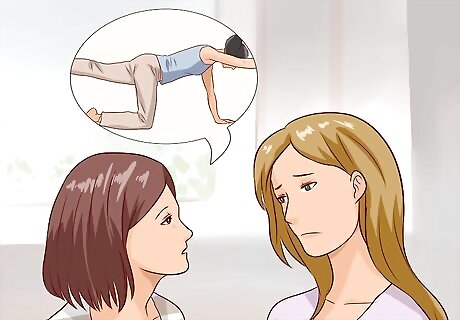
Suggest emotional management options. Helping someone develop more emotional awareness and coping techniques that don’t involve self-harm can help minimize self-injurious behaviors. This could be something as simple as maintaining a journal that is dedicated to expressing and processing emotions, or something more complex, like going to psychotherapy sessions to learn about processing emotions. Practicing mindfulness through meditation or yoga may help self-injurers be in touch with and process their emotions in a calmer, healthier way. Additionally, the discipline and strength required to achieve advanced yoga positions may help some people experience a release similar to that felt during self-injury.
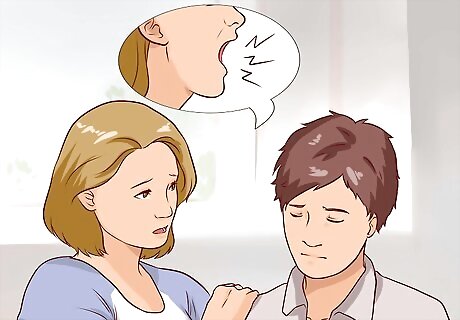
Help identify triggers. The self-injurer likely has specific triggers: events, situations, or emotions that cause him to feel the need to self-harm. If they become aware of those triggers, they can develop more strategies for coping, avoiding the triggers, or making the conscious choice to engage in an alternate activity. It may help if you talk to the person who is practicing self-harm about your own emotional triggers and how you deal with them without injuring yourself. Be sure to approach such a conversation from a position of caring and offering alternatives, not judging or dividing yourself from them.
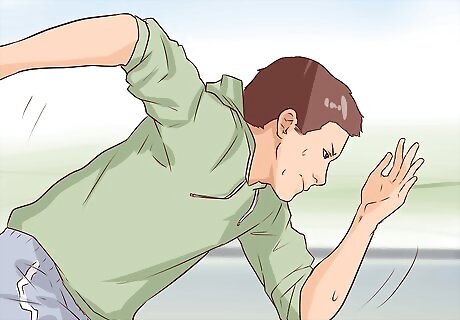
Offer alternatives to self-harm. Based on the reason that the person self-harms, you can offer some alternative strategies for dealing with the feelings. Not every alternative will work for every person, but suggesting some specific alternatives to try may help your friend find something that works for them. Someone who self-harms to deal with emotions may feel a similar release through moderate to vigorous exercise, making loud noises, destroying something (such as ripping paper or breaking sticks in half), writing poetry or songs, or writing in a journal. Someone who self-harms to calm down may be able to substitute the self-harm with self-care in the form of luxurious baths, massages, spending time with beloved pets, or cuddling in a soft, warm blanket. Someone who self-harms from a feeling of numbness may be able to reach out to friends to feel more connected. They may also be able to feel less numb by replacing the self-injury with less harmful behaviors such as eating foods with very intense flavors, holding an ice cube tightly until it melts, or even taking a cold shower.
Finding Help
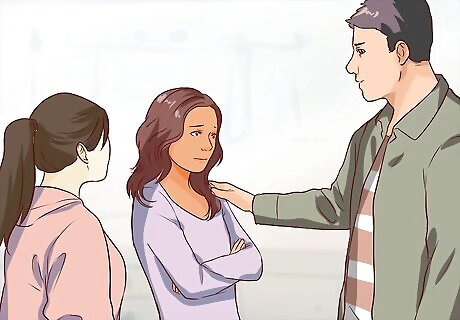
Don’t keep the secret. Particularly if you and the self-injurer are both teenagers, you should encourage your friend to talk to his parents, a teacher, a school counsellor, or another trusted adult about their self-injury. Tell them that you will go with them if they are afraid to go by themselves. Do not promise to keep this a secret. Keeping quiet enables your friend and gives him permission to keep injuring themselves. Tell someone trustworthy yourself if necessary. Be honest with your friend and tell them whom you will be telling. Choose wisely and tell someone who will maintain confidentiality and act in a professional manner to get your friend the help they need. Prepare for anger. Your friend might be ashamed or embarrassed and not want anyone to know. Let your friend know you care about them. You might be afraid of betraying your friend’s confidence and losing a friend, but your friend needs professional help and their health and safety is the most important factor. Most friends will understand your decision in time. Do not give in to threats of further self-harm. Your friend may be angry and threaten to hurt themselves further if you say you want to tell someone about their behaviour. Remember that you are not to blame and the only person that has control over their injuries is the self-injurer themselves.
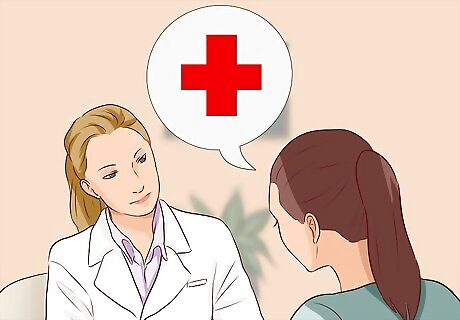
Get medical help for the self-injurer. While there is no specific diagnostic test for self-injury, you can encourage your friend to see a physician or mental health practitioner who can evaluate, diagnose, and create a treatment plan. Hospitalization may be required for severe, short-term crises. Some self-inflicted wounds may require medical treatment. Extensive scarring may be able to be covered or reduced with cosmetic surgery.
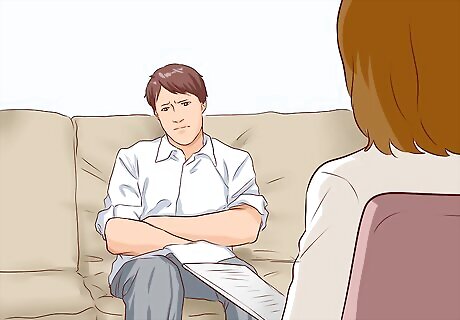
Help your friend find emotional help. Counselling, or psychotherapy, can help your friend identify and manage underlying issues resulting in self-injuring behaviours. There are several types of therapy that can be helpful, such as: Cognitive behavioural therapy. This helps identify negative beliefs and behaviours, and replace them with healthy, positive coping strategies. People create plans to better identify and react to their triggers, tolerate distress, and identify safe people and places to go to when they have the urge to self-injure Psychodynamic psychotherapy. This focuses on identifying past experiences, traumatic memories, or interpersonal issues to get at the root of emotional problems Mindfulness-based therapies. These help individuals learn to live in the present and understand intentions, to reduce anxiety and depression, and improve general well-being Family therapy. This is a group-based therapy which may be recommended in some cases, particularly for young individuals who self-injure

Be a source of support. Remember to treat your friend the same way that you did before you knew he was self-injuring. Continue to spend time together doing things that you both like to do. In addition to continuing to be a good friend, you may offer to: Be an emergency contact if your friend has an urge to self-injure, or take them to medical appointments or clinics as necessary. Become an exercise buddy. Physical activity and relaxation techniques can help with anxiety, depression, and general wellness. Plus, you’ll have fun together. Encourage expansion of social networks. Many people who self-injure feel lonely, isolated, and disconnected.

Support your loved one in taking medications. Anti-anxiety, anti-depressive, or anti-psychotic medication maybe prescribed by the physician or psychiatrist treating the person who self-injures. Some people associate taking such medications with feelings of shame or failure. This can be counteracted by your loving support; be sure to encourage your friend to stay on his medication and to embrace a more positive life after self-injury.

Take care of yourself, too. You can spend a lot of energy on helping someone who self-harms. You may be worried, confused, shocked, conflicted, sad, and angered. These feelings are normal and can be draining. Take time to be good to yourself and enjoy your hobbies. Get enough rest and exercise. See a counsellor to cope with your feelings, too. Remember you are not responsible for your friend’s actions. You cannot make your friend stop hurting themselves. You can only play a supporting role in their journey to healing.




















Comments
0 comment